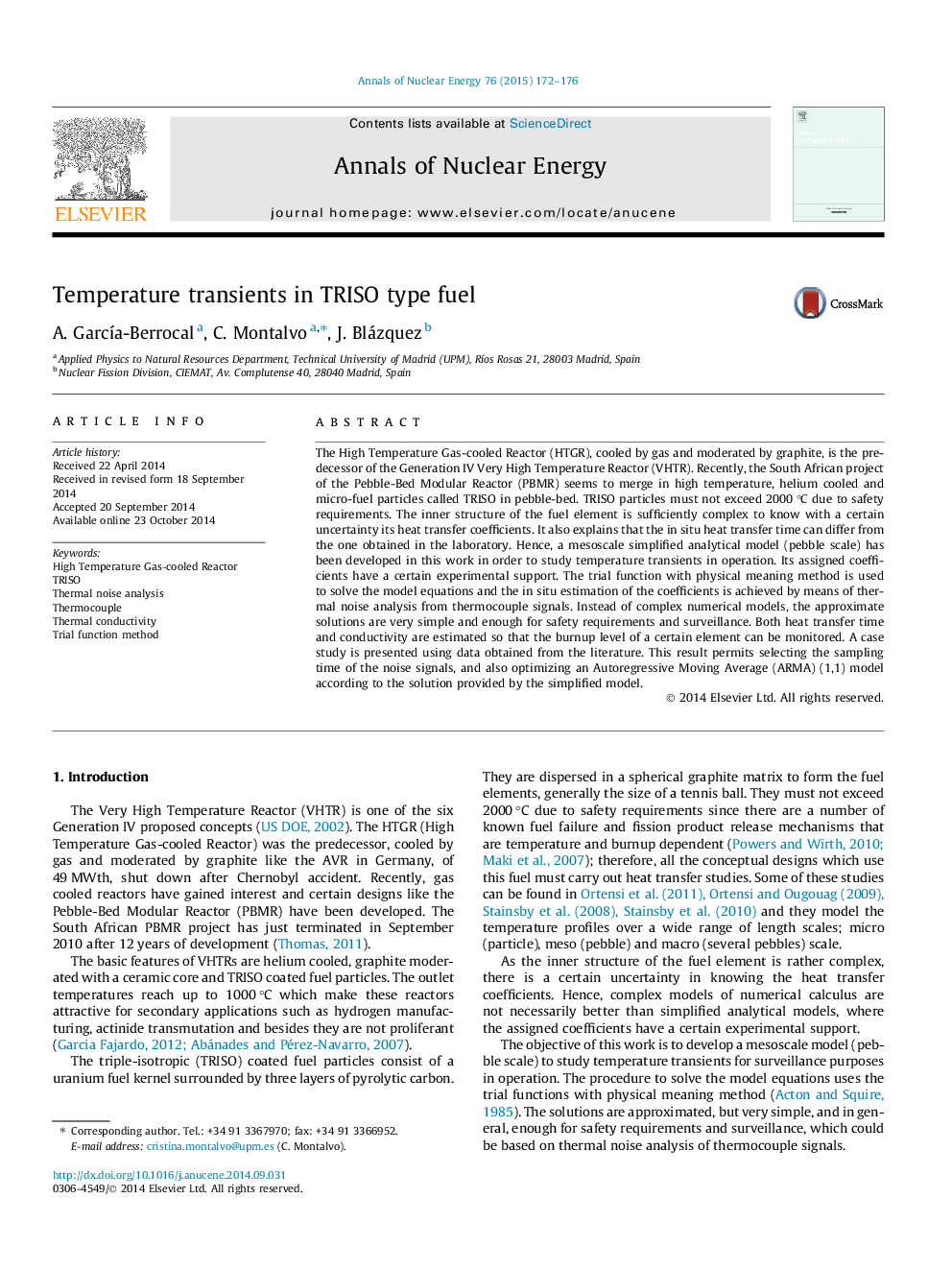| Article ID | Journal | Published Year | Pages | File Type |
|---|---|---|---|---|
| 1728183 | Annals of Nuclear Energy | 2015 | 5 Pages |
•A mesoscale simplified model proposed to model heat transfer in TRISO particles.•The equations are solved by using the trial functions with physical meaning method.•The solution obtained leads to a transfer function to be simulated with an ARMA model.•Heat transfer coefficients can be monitored through noise analysis.
The High Temperature Gas-cooled Reactor (HTGR), cooled by gas and moderated by graphite, is the predecessor of the Generation IV Very High Temperature Reactor (VHTR). Recently, the South African project of the Pebble-Bed Modular Reactor (PBMR) seems to merge in high temperature, helium cooled and micro-fuel particles called TRISO in pebble-bed. TRISO particles must not exceed 2000 °C due to safety requirements. The inner structure of the fuel element is sufficiently complex to know with a certain uncertainty its heat transfer coefficients. It also explains that the in situ heat transfer time can differ from the one obtained in the laboratory. Hence, a mesoscale simplified analytical model (pebble scale) has been developed in this work in order to study temperature transients in operation. Its assigned coefficients have a certain experimental support. The trial function with physical meaning method is used to solve the model equations and the in situ estimation of the coefficients is achieved by means of thermal noise analysis from thermocouple signals. Instead of complex numerical models, the approximate solutions are very simple and enough for safety requirements and surveillance. Both heat transfer time and conductivity are estimated so that the burnup level of a certain element can be monitored. A case study is presented using data obtained from the literature. This result permits selecting the sampling time of the noise signals, and also optimizing an Autoregressive Moving Average (ARMA) (1,1) model according to the solution provided by the simplified model.
